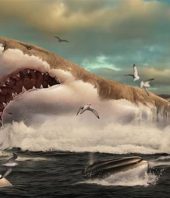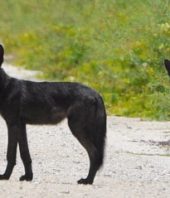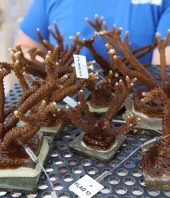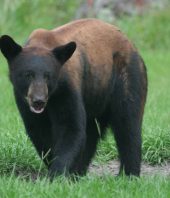More than 500 non-native fish, wildlife and plant species live and thrive in Florida.
What’s the problem?
Exotic creatures and vegetation — from iguanas to Burmese pythons to lion fish and air potato vines — threaten native species and cause serious economic damage, says the Florida Fish and Wildlife Conservation Commission. There are several hundred natives species on Florida’s Endangered and Threatened Species List.
Are they a threat to humans?
In some cases, the critters also pose a serious threat to human health and safety, as is the case with wild monkeys roaming the state. There has long been a colony of vervet monkeys living near the Fort Lauderdale/Hollywood International Airport in Dania Beach. These wild primates carry diseases, including herpes B. As of February, it's a crime to feed them, according to the FWC.
How do these animals get here?
Sometimes they escape during storms or are released into the wild by pet owners and end up turning into a real headache for residents, says the FWC. That's the case with green iguanas, which are now the scourge of South Florida homeowners. The bright green reptilesstarted showing up in the 1960s. Now, packs of them swarm seawalls, roam yards and parks, and leave a path of destruction and filth in their wake.
The FWC has introduced a beetle to help control the invasive air potato vine, which can grow up to 8 inches a day. (Courtesy/FWC)
How do invasive plants hurt Florida’s ecosystem?
The air potato vine, for example, is an aggressive, noxious weed that smothers other vegetation, growing up to 8 inches a day. The FWC recently introduced a small leaf beetle to help control the plants.
There are many more interlopers threatening the state’s native wildlife and ecology. Have a look at Florida's most invasive species.
For more information, visit the Florida Fish and Wildlife Conservation Commission website at myfwc.com/wildlifehabitats/nonnatives/invasive-species/.
Source: Sun Sentinel, Full Article






